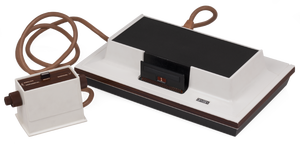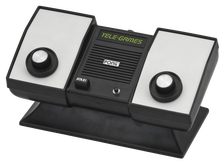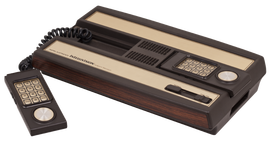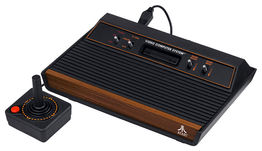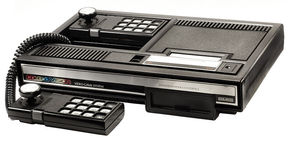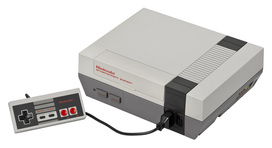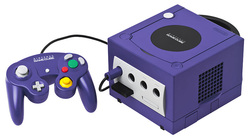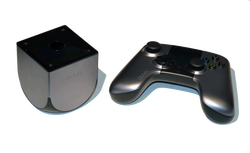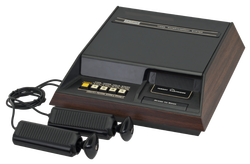Pre-Video Game Industry Day Activity - Thursday, Dec. 17th
Your teacher will assign a console to you. You will do research on the system and fill out the linked form. Make sure you choose the right form for your school or your teacher will not get your responses. Then you will report your findings to the class. On Friday Dec. 18th we will learn about the video game industry, and if your teacher is participating, get an opportunity to play some of the systems below. All information below is from Wikipedia, the free encyclopedia.
General background information about the systems for the pre-video game industry day activity.
Click the image of the console to go to the Google Search for that system.
Sega Genesis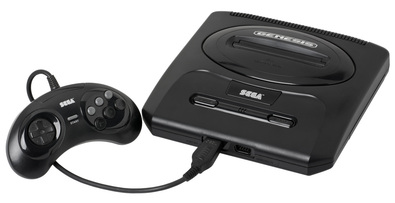
The Sega Genesis, is a 16-bit video game console developed, manufactured, and marketed by Sega Enterprises, Ltd. first released in Japan in 1988 and later released worldwide. It is Sega's third and most successful console in terms of both sales and marketshare, selling well in North America and Europe, and less so in Japan. Its arcade game ports, first Sonic the Hedgehog release, wide array of first and third-party sports titles, and aggressive youth marketing greatly contributed to its success.
|
Sega Saturn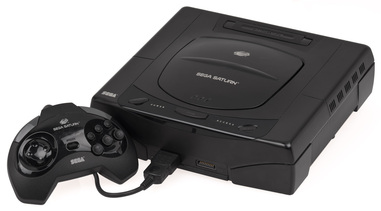
The Sega Saturn, is a 32-bit fifth-generation video game console that was first released by Sega on May 11, 1995 in North America. The Saturn had impressive hardware at the time of its release, but its design, with two CPUs and six other processors, made harnessing this power extremely difficult for developers accustomed to conventional programming.
|
Super NES/Super Nintendo Entertainment System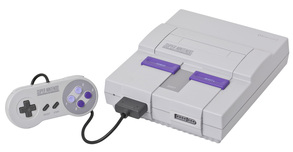
The Super Nintendo Entertainment System is a 16-bit video game console that was released in North America in 1991. The Super Nintendo Entertainment System is Nintendo's second home console, following the Nintendo Entertainment System (NES). The console introduced advanced graphics and sound capabilities compared with other consoles at the time. Additionally, development of a variety of enhancement chips (which were integrated on game circuit boards) helped to keep it competitive in the marketplace.
|
N64/Nintendo 64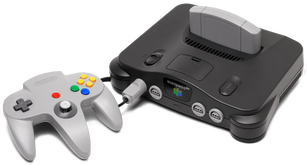
The Nintendo 64 often referred to as N64
is Nintendo's third home video game console for the international market. Named for its 64-bit central processing unit, it was released in September 1996 in North America. It is Nintendo's last home console to use ROM cartridges to store games. As part of the fifth generation of gaming, it primarily competed with the PlayStation and the Sega Saturn. |
Dreamcast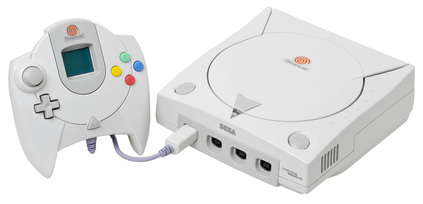
The Dreamcast is a video game console that was released by Sega in 1999. With a strong marketing campaign and reformed studios to develop new creative content, the Dreamcast was initially well received with a very successful launch and strong sales. However when Sony announced the PlayStation 2, sales of the Dreamcast quickly plummeted, due in no small part to the console's inability to support movies on the new DVD format. Despite its short lifespan, the Dreamcast was widely hailed as ahead of its time.
|
Wii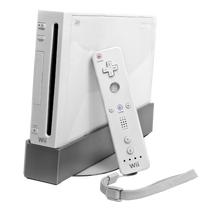
The Wii is a home video game console released by Nintendo on November 19, 2006. As a seventh-generation console, the Wii competes with Microsoft's Xbox 360 and Sony's PlayStation 3. Nintendo states that its console targets a broader demographic than that of the two others. The Wii introduced the Wii Remote controller, which can be used as a handheld pointing device and which detects movement in three dimensions. Another notable feature of the console is WiiConnect24, which enables it to receive messages and updates over the Internet while in standby mode. Like other seventh-generation consoles, it features a game download service, called "Virtual Console", which features emulated games from past systems.
|
Playstation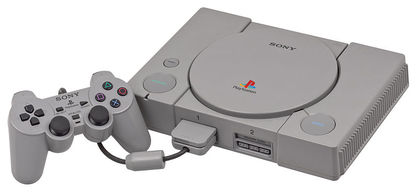
The PlayStation is a 32-bit video game console first released by Sony Computer Entertainment in Japan on December 3, 1994, with Western releases in September 1995. The PS was the first of the PlayStation
series of consoles and handheld game devices. As part of the fifth-generation of gaming, it primarily competed with the Nintendo 64and the Sega Saturn. |
Playstation 2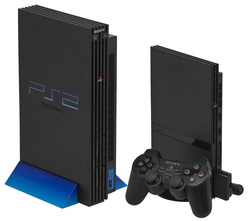
The PlayStation 2 is a video game console that was manufactured by Sony Computer Entertainment. It was released on March 4, 2000, in Japan followed by North America
and Europe later the same year. The sixth-generation console competed with the Sega Dreamcast, Microsoft Xbox, and Nintendo GameCube. The PlayStation 2 went on to become the best-selling video game console, selling over 150 million units. More than 3,800 game titles have been released for the PS2 since launch. |
Playstation 3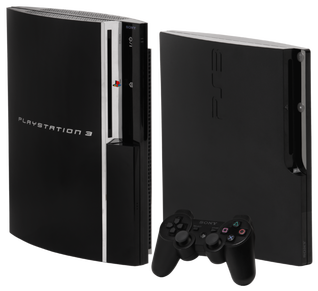
The PlayStation 3 is a home video game console produced by Sony Computer Entertainment. It is the successor to the PlayStation 2, as part of the PlayStation series. The PlayStation 3 competes with Microsoft's Xbox 360 and Nintendo's Wii as part of the seventh generation of video game consoles. It was the first console to use Blu-ray Disc as its primary storage medium. Major features of the console include its unified online gaming service, the PlayStation Network, and its connectivity with the PlayStation Portable andPlayStation Vita.
|
Playstation 4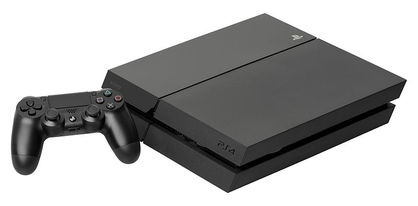
PlayStation 4 (PS4) is a video game console from Sony Computer Entertainment. Announced as the successor to PlayStation 3. It competes with Nintendo's Wii U and Microsoft's Xbox One, as one of the eighth generation of video game consoles. Sony intends more focus on social gameplay, incorporating a "share" button on the new controller and enabling a view of in-game play streamed live from friends. The console enables interactivity with other services and devices through the following methods: Gaikai, a cloud-based gaming service that offers streaming video game content; PlayStation App, designed to enhance gameplay by using smartphones and tablets as a second screen; and PlayStation Vita's design for playing a majority of PlayStation 4 games through wireless Remote Play.
|
XBox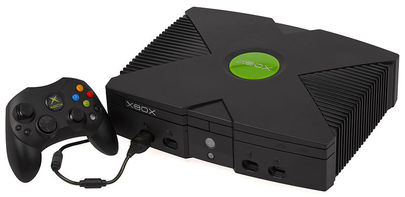
The original Xbox was released on November 15, 2001 in North America. It was Microsoft's first foray into the gaming console market. As part of the sixth-generation of gaming, the Xbox competed with Sony's PlayStation 2, Sega's Dreamcast (which stopped American sales before the Xbox went on sale), and Nintendo's GameCube.
|
XBox 360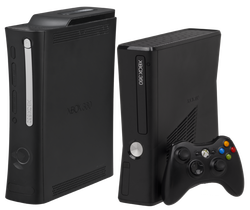
The Xbox 360 is the second video game console developed by and produced for Microsoft and the successor to the Xbox. The Xbox 360 competes with Sony's PlayStation 3 andNintendo's Wii as part of the seventh generation of video game consoles. As is typical of seventh-generation consoles, the Xbox 360 features an online service (called Xbox Live), used to download games (using Xbox Live Arcade) and game demos, music, and video media. It can also be used to play back media using Windows Media Center. However, unlike other seventh-generation consoles, a monthly fee must be paid to compete in online games, or to use (often region-specific) third-party media streaming applications.
|
XBox One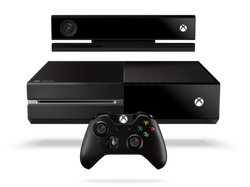
Xbox One is a video game console developed and manufactured by Microsoft. Announced on May 21, 2013, it is the successor to the Xbox 360 and is the third console in the Xbox family. It directly competes with Sony's PlayStation 4 and Nintendo's Wii U as part of the eighth generation of video game consoles. The console includes a newly upgraded Kinect motion sensing peripheral, previously an optional attachment for the Xbox 360. Microsoft is emphasizing the Kinect's integration with Xbox One through features such as a built-in Skype client for videoconferencing, user recognition and tracking, and the ability to use voice commands and gestures to navigate the console's user interface. New gaming functionality will include an expanded Xbox Live service, improved Kinect functionality, cloud computing, the ability to automatically record and share video highlights from gameplay, and support for live streaming gameplay online.
|
Wii U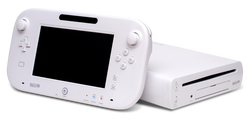
Wii U is a video game console from Nintendo and the successor to the Wii. The system was released on November 18, 2012, in North America. It is the first entry in the eighth generation of video game home consoles. Currently, it competes with Sony's PlayStation 4 and Microsoft's Xbox One. The Wii U's primary controller is the Wii U GamePad, which features an embedded touchscreen. The touchscreen is used to supplement the main gameplay shown on the television or, with games supporting Off-TV Play, can allow the player to continue playing games by displaying the main gameplay even when the television is off. In addition to the Wii U GamePad, a more traditional controller, called the Wii U Pro Controller, may be used. The system is backward compatible with Wii, and Wii U games may support compatibility with Wii peripherals, such as the Wii Remote and the Nunchuk.
|
